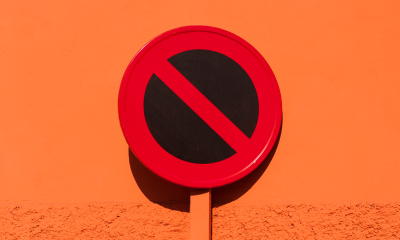Technology
Facebook hasn’t given up on breaking news

You might not know it, but Facebook’s not done with breaking news.
The company is rolling out its “breaking news” labels to publishers in Australia, France, Germany, Mexico, Spain and the UK, and will start testing the labels in Europe and Asia. The feature was previously only widely-available in the United States and Canada.
The labels allow publishers to append “breaking news” labels to a limited number of stories — about once per week, according to Facebook.
“We’ve seen that breaking news posts about politics, crime, disaster, and business perform best. We’re using data like this to help publishers understand how to use the label to connect people with the breaking news that they need to see most,” writes Facebook product manager Joey Rhyu.
The social network first began testing the breaking news labels about a year ago. Back then, one of the main questions was whether the breaking news label would affect a particular post’s ranking in the News Feed. At the time, Facebook said it wouldn’t, but acknowledged that could change.
Now, a Facebook spokesperson tells me that it considers the “breaking news” tag an indication of “timeliness,” which is one factor Facebook considers in determining where any given post should fall in your News Feed.

Facebook’s breaking news labels can now include time stamps.
This shows that Facebook is still trying to find a way to show its users newsworthy information in a timely manner — something that Facebook’s News Feed, which often surfaces days-old posts, has never been great at.
Facebook has a messy history with breaking news. The company introduced its now infamous “trending” section in 2014, which displayed popular news stories on the platform. Originally, these stories were curated by a group of human editors who selected which articles would appear for any given news story.
But that effort, which was largely run by contractors employed by Facebook, came under fire in 2016 when Gizmodo reported that the contractors regularly “suppressed” conservatives. The story resulted in a major backlash against Facebook, with conservative politicians saying it was proof the social network was biased against conservatives.
Much ink has been spilled about the ensuing controversy, which I won’t rehash here, but Facebook promptly got rid of its human editors and opted to let its algorithms determine which topics and stories should appear in the “trending” section. But, even with human editors out of the picture, the trending section was still a bit of a disaster. The section still managed to amplify conspiracy theories and “news” from questionable sources.
So it was a relief to many when Facebook announced earlier this year that it would kill the “trending” section for good, which brings us back to breaking news.
With the ill-fated “trending” section gone for good, and publishers still wary of Facebook’s commitment in the wake of bigger News Feed shakeups, the “breaking news” labels are a chance for publishers to still get some of their most important stories in front of readers on Facebook.

!function(f,b,e,v,n,t,s){if(f.fbq)return;n=f.fbq=function(){n.callMethod?
n.callMethod.apply(n,arguments):n.queue.push(arguments)};if(!f._fbq)f._fbq=n;
n.push=n;n.loaded=!0;n.version=’2.0′;n.queue=[];t=b.createElement(e);t.async=!0;
t.src=v;s=b.getElementsByTagName(e)[0];s.parentNode.insertBefore(t,s)}(window,
document,’script’,’https://connect.facebook.net/en_US/fbevents.js’);
fbq(‘init’, ‘1453039084979896’);
if (window.mashKit) {
mashKit.gdpr.trackerFactory(function() {
fbq(‘track’, “PageView”);
}).render();
}
-

 Business7 days ago
Business7 days agoFormer top SpaceX exec Tom Ochinero sets up new VC firm, filings reveal
-

 Business6 days ago
Business6 days agoConsumer Financial Protection Bureau fines BloomTech for false claims
-

 Business4 days ago
Business4 days agoLangdock raises $3M with General Catalyst to help businesses avoid vendor lock-in with LLMs
-

 Entertainment4 days ago
Entertainment4 days agoWhat Robert Durst did: Everything to know ahead of ‘The Jinx: Part 2’
-

 Business6 days ago
Business6 days agoKlarna credit card launches in the US as Swedish fintech grows its market presence
-

 Entertainment3 days ago
Entertainment3 days agoThis nova is on the verge of exploding. You could see it any day now.
-

 Entertainment7 days ago
Entertainment7 days agoHow to watch ‘The Sympathizer’: Release date and streaming deals
-

 Entertainment6 days ago
Entertainment6 days agoHow to set boundaries in the early stages of dating






















